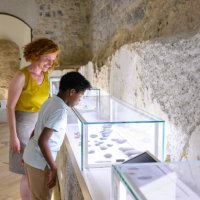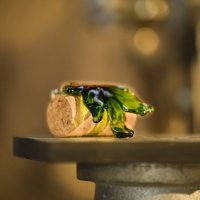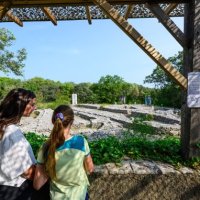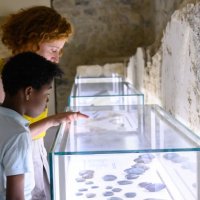The Val de Montferrand community

From the 13th century onwards, the parishes and villages of the Montferrand valley came together under the authority of the Bishop of Maguelone and the Chatelain of Montferrand, to form the community of Val de Montferrand.
In 1172, the House of Toulouse seized the counties of Melgueil and Montferrand. Then in 1209, during the Albigensian Crusade, Raymond VI of Toulouse, suspected of complacency towards the Cathar heresy, donated 7 castles to the church in order to win its good graces. The Château de Montferrand was one of these and became part of the diocese of Maguelone. When Raymond VI failed to fulfil his vassalage obligations, the entire county was confiscated from him in 1211, then passed on to the Bishops of Maguelone in 1215, who became Counts of Melgueil and Montferrand until 1793.

By the end of the 13th century, village communities were gradually taking shape.
L’évêque de Maguelone, qui détient désormais l’autorité comtale, accompagne cette mutation et récompense les habitants de la vallée de Montferrand qui lui sont restés particulièrement fidèles. Il octroie ainsi à certaines paroisses et villages, des privilèges et avantages, détaillés par trois actes fondateurs de 1276, 1285 et 1292. Dans les faits, il s’agit de progrès sociaux qui marquent l’intérêt de l’évêque à ce que le peuple ne soit pas pressuré par les seigneurs subalternes, en limitant certaines charges et veillant à de meilleures libertés individuelles.
The "Val de Montferrand community" was established in the first charter of 1276.
It comprised 6 parishes (Valfaunès, Saint-Mathieude-Tréviers, Saint-Jean-de-Cuculles, Saint-Sébastien-de-Casanhas (Le Triadou), Saint-Gély-du-Fesc, Saint-Étienne (Cazevielle)) and 2 villages (Combaillaux and Saint-Clément-de-Rivière).
It gradually expanded to include around fifteen parishes and/or villages such as Les Matelles, Viols-le-Fort, Saint-Bauzille-de-Montmel and Vailhauquès, all grouped around the castle. It set up its headquarters in Les Matelles, under the authority of the bishop, represented by the lord and officer of the Château de Montferrand, and organised itself into elected syndics representing each parish or village.
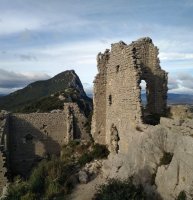
In the 15th century, when the kingdom was still ravaged by the 100 Years' War, the church gradually lost its influence and the county of Montferrand moved closer to the kingdom of France. The inhabitants of the Val de Montferrand approached the royal authorities for permission to fortify their villages.
In 1459, they obtained the right to sit on the Estates-General of Languedoc, confirming the solidity of their agreement. They demonstrated a real sense of community. In their legal acts, such as property sales, wills and criminal sentences, they specified their membership of and involvement in the village community.
The institution of this grouping of interests through clearly identified acts would define a political unity, a representation necessary to carry weight in the face of larger towns such as Montpellier, Ganges or Lunel. The Château de Montferrand, from the top of its rocky spur, still reminds us today of the epics of this community and territorial agreement.

